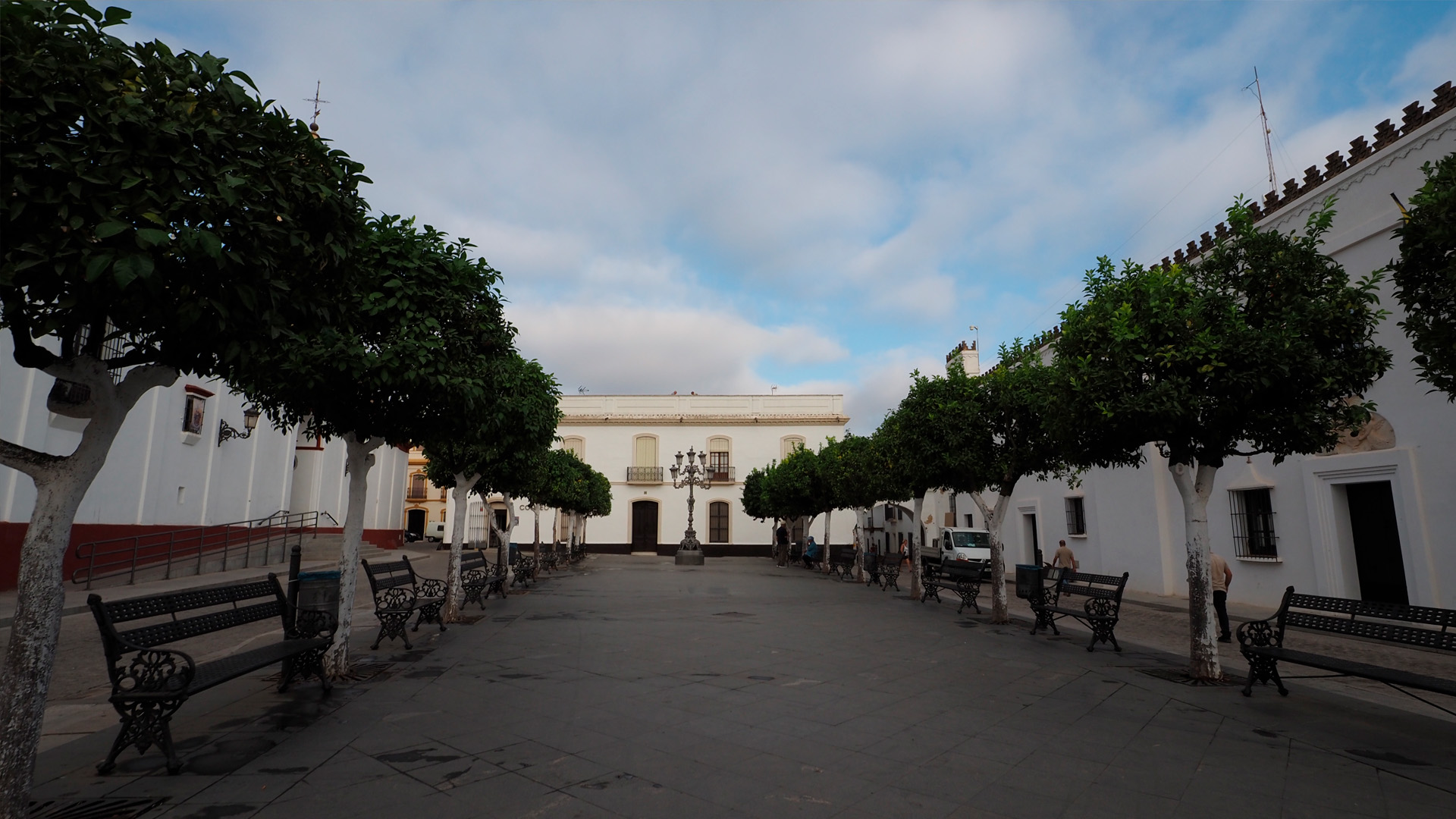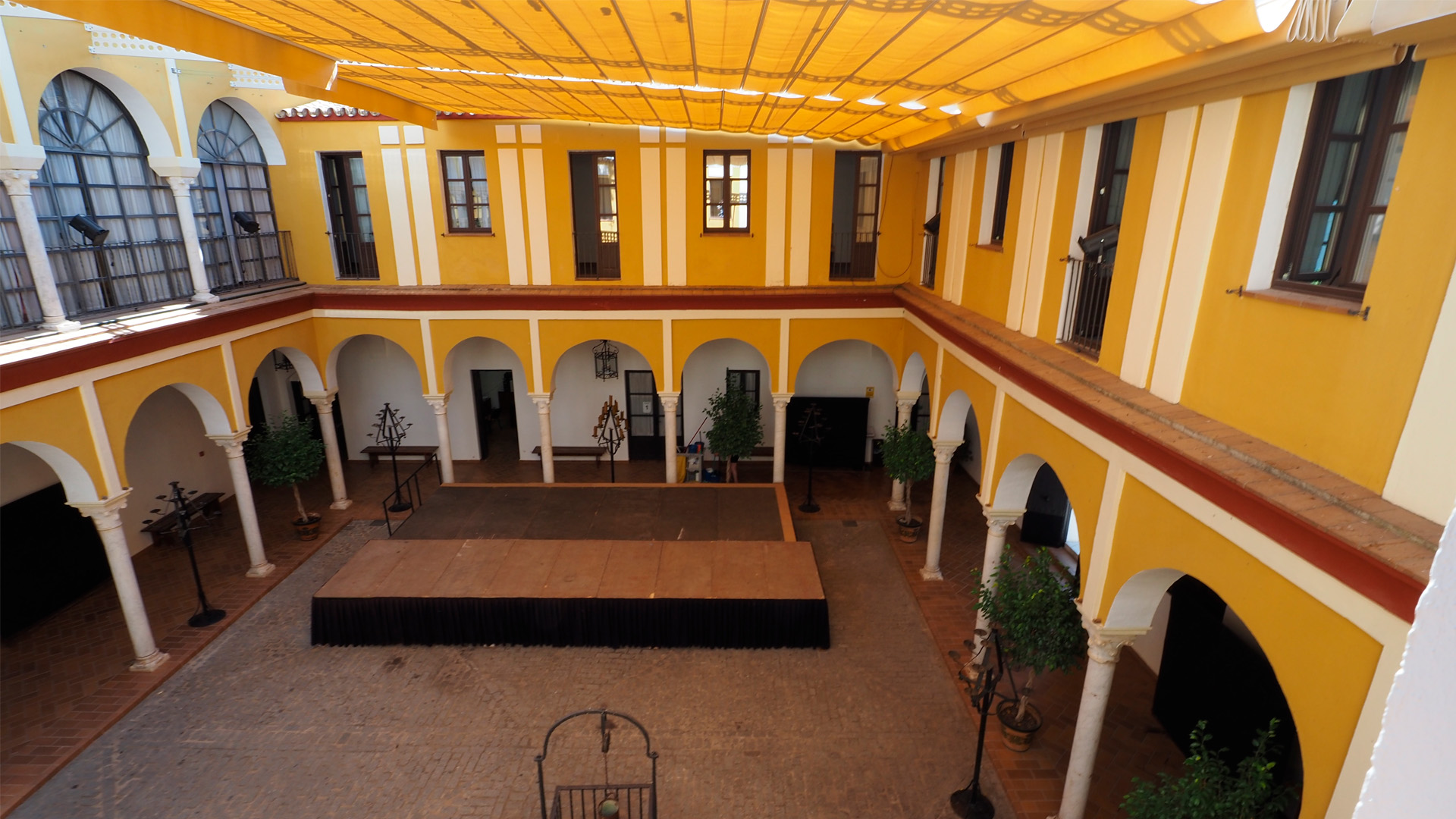Nous avons préparé 3 visites virtuelles en prévision de votre visite.
Vous pouvez désormais visiter les monuments emblématiques d’Olivares depuis votre smartphone ou votre PC. Il suffit de cliquer sur le bouton ci-dessous pour commencer votre visite, à bientôt à l’intérieur !
Mira cómo se ven en 3D sus 3 referencias monumentales

La Plaza de España, qui est actuellement le centre névralgique de la ville, était autrefois le terrain de parade du palais comtal. Il est délimité par les bâtiments de la Collégiale, le Palais et le Grenier ou Alfolí, un bâtiment pour le stockage du grain érigé entre les XVIIe et XVIIIe siècles, qui conserve des éléments stylistiques du style baroque sur sa façade.
Les origines de la ville d’Olivares remontent à l’époque romaine, lorsque, après la conquête de Baetica par un soldat romain appelé Turculus, les terres aujourd’hui occupées par la ville ont été converties au fil du temps en un établissement connu sous le nom d’Estercolines ou Estercolinas.
Construit dans la seconde moitié du XVIe siècle par Don Pedro de Guzmán, 1er comte d’Olivares, il a été enrichi au XVIIe siècle par Don Gaspar de Guzmán y Pimentel, comte-duc d’Olivares. Résidence des comtes d’Olivares, il sera plus tard également la résidence des abbés et des chanoines de la Collégiale. De style Renaissance et de composition symétrique, il est flanqué de deux arcs brisés couronnés de créneaux avec des décorations en bas-relief. La porte principale présente des demi-colonnes élancées en marbre de Gênes sur un jambage, tandis que la porte centrale porte le blason de la Casa de los Guzmanes, en marbre de Gênes, qui représente deux harpies tenant le blason, surmonté d’un dragon ailé. Actuellement siège de l’hôtel de ville, il propose une exposition permanente de reproductions artisanales de costumes de l’époque baroque.


Le deuxième comte d’Olivares, Enrique de Guzmán y Ribera, est à l’origine de la fondation de la chapelle d’Olivares. Entre 1582 et 1591, Don Enrique a occupé l’un des postes les plus importants de son époque, l’ambassade d’Espagne à Rome ; il a traité avec trois pontifes, Grégoire XIII, Sixte V et Grégoire XIV, dont le premier a approuvé la fondation de la chapelle d’Olivares et le second lui a accordé d’importantes bulles qui conféraient à la chapelle des privilèges notables.
Le troisième comte d’Olivares, Gaspar de Guzmán y Pimentel, qui est entré dans l’histoire de l’Espagne pour avoir été le favori du roi Philippe IV lorsqu’il a hérité de la maison d’Olivares, a manifesté son intention de rehausser le statut de la chapelle qui avait été fondée par son père, et a donc proposé l’érection de l’église en collégiale, une grâce qu’il a finalement obtenue du pape Urbanc Vill par une bulle émise le 1er mars 1623, bien que ces bulles ne soient pas parvenues en Espagne avant 1625.

Ruta Conde Duque Olivares 2022. Todos los derechos reservados © Nattule. Desarrollo web NattuAR.
We firmly believe that the internet should be available and accessible to anyone, and are committed to providing a website that is accessible to the widest possible audience, regardless of circumstance and ability.
To fulfill this, we aim to adhere as strictly as possible to the World Wide Web Consortium’s (W3C) Web Content Accessibility Guidelines 2.1 (WCAG 2.1) at the AA level. These guidelines explain how to make web content accessible to people with a wide array of disabilities. Complying with those guidelines helps us ensure that the website is accessible to all people: blind people, people with motor impairments, visual impairment, cognitive disabilities, and more.
This website utilizes various technologies that are meant to make it as accessible as possible at all times. We utilize an accessibility interface that allows persons with specific disabilities to adjust the website’s UI (user interface) and design it to their personal needs.
Additionally, the website utilizes an AI-based application that runs in the background and optimizes its accessibility level constantly. This application remediates the website’s HTML, adapts Its functionality and behavior for screen-readers used by the blind users, and for keyboard functions used by individuals with motor impairments.
If you’ve found a malfunction or have ideas for improvement, we’ll be happy to hear from you. You can reach out to the website’s operators by using the following email
Our website implements the ARIA attributes (Accessible Rich Internet Applications) technique, alongside various different behavioral changes, to ensure blind users visiting with screen-readers are able to read, comprehend, and enjoy the website’s functions. As soon as a user with a screen-reader enters your site, they immediately receive a prompt to enter the Screen-Reader Profile so they can browse and operate your site effectively. Here’s how our website covers some of the most important screen-reader requirements, alongside console screenshots of code examples:
Screen-reader optimization: we run a background process that learns the website’s components from top to bottom, to ensure ongoing compliance even when updating the website. In this process, we provide screen-readers with meaningful data using the ARIA set of attributes. For example, we provide accurate form labels; descriptions for actionable icons (social media icons, search icons, cart icons, etc.); validation guidance for form inputs; element roles such as buttons, menus, modal dialogues (popups), and others. Additionally, the background process scans all of the website’s images and provides an accurate and meaningful image-object-recognition-based description as an ALT (alternate text) tag for images that are not described. It will also extract texts that are embedded within the image, using an OCR (optical character recognition) technology. To turn on screen-reader adjustments at any time, users need only to press the Alt+1 keyboard combination. Screen-reader users also get automatic announcements to turn the Screen-reader mode on as soon as they enter the website.
These adjustments are compatible with all popular screen readers, including JAWS and NVDA.
Keyboard navigation optimization: The background process also adjusts the website’s HTML, and adds various behaviors using JavaScript code to make the website operable by the keyboard. This includes the ability to navigate the website using the Tab and Shift+Tab keys, operate dropdowns with the arrow keys, close them with Esc, trigger buttons and links using the Enter key, navigate between radio and checkbox elements using the arrow keys, and fill them in with the Spacebar or Enter key.Additionally, keyboard users will find quick-navigation and content-skip menus, available at any time by clicking Alt+1, or as the first elements of the site while navigating with the keyboard. The background process also handles triggered popups by moving the keyboard focus towards them as soon as they appear, and not allow the focus drift outside of it.
Users can also use shortcuts such as “M” (menus), “H” (headings), “F” (forms), “B” (buttons), and “G” (graphics) to jump to specific elements.
We aim to support the widest array of browsers and assistive technologies as possible, so our users can choose the best fitting tools for them, with as few limitations as possible. Therefore, we have worked very hard to be able to support all major systems that comprise over 95% of the user market share including Google Chrome, Mozilla Firefox, Apple Safari, Opera and Microsoft Edge, JAWS and NVDA (screen readers), both for Windows and for MAC users.
Despite our very best efforts to allow anybody to adjust the website to their needs, there may still be pages or sections that are not fully accessible, are in the process of becoming accessible, or are lacking an adequate technological solution to make them accessible. Still, we are continually improving our accessibility, adding, updating and improving its options and features, and developing and adopting new technologies. All this is meant to reach the optimal level of accessibility, following technological advancements. For any assistance, please reach out to